Convenience Store Food Trends 2023-2024
Introduction
The convenience store industry is a rapidly evolving landscape with new food trends emerging all the time. As the demand for quick, on-the-go meals continues to increase, c-stores are readily becoming a popular alternative to traditional fast food restaurants.
With consumers seeking out more health-conscious and customizable food options, c-stores are looking to expand their offerings to meet these needs. From plant-based alternatives to ingredient traceability and minimalist packaging, there is an increased focus on meeting both consumer health concerns and preferences.
A strong push for locally sourced products, along with the rise of CBD, THC and psilocybin food products, has created new opportunities for the industry. As regional differences also play a role, c-stores are adapting to meet the unique needs and preferences of consumers in different areas.
Nationally, convenience stores are overtaking a larger portion of the food service market share, with this trend expected to continue through the decade. According to Grandview Research, not only will the convenience store industry continue to grow (5.6% CAGR) through 2028, but the food service sector is projected to be the fastest growing in the industry at a 6.4% compound annual growth rate (15). In this guide, we will delve into the latest food trends for the convenience store industry and how c-stores can adapt to meet the ever-changing needs of our consumers.
Table of Contents
- Plant-Based Alternatives
- Naturally Occurring Sweeteners
- Emerging Flavor and Spice Trends
- Nostalgic Eats
- The Mighty Fried Chicken Sandwich
- New Horizons for “Enhanced” Food Products
Supporting Health and Wellness >>>
- Supporting Balanced Wellness
- Proactive Nutritional Personalization
- Dietary Supplements
- Affordable Nutrition
Packaging and Production Trends >>>
- Environmentally Friendly Production
- Social Responsibility
- Trust and Traceability
- Label-Friendly Ingredients
- Minimalist Packaging
Regional C-Store Food Trends >>>
- Northeast
- Mid-Atlantic
- Southeast
National C-Store Food Trends
Nationally, convenience store chains are seeing strong and steady growth, especially in the food service sector. This is being driven both by consumer trends, and strong investment from c-store brands. According to a 2022 report from NACS, 91% of convenience store operator respondents planned to invest significantly in their food service programs in 2023 and 2024.

Additionally, consumers are considering c-stores when stopping for a quick meal, alongside their favorite quick service restaurants, more than ever before – up to 60% of consumers now consider purchasing meals at c-stores, with 25% regularly visiting c-stores for lunch (17). These mid-day meals include a wide variety of eats: hot foods, grab-and-go refrigerated items, and made to order items like sandwiches. In an added boon to c-stores, these baskets are usually filled out with additional items like groceries or alcoholic beverages.
These positive consumer trends have spurred increased investment in food service across the industry. C-store chains are adding hot foods, grab-and-go refrigerated items, made-to-order items like deli sandwiches, and even full kitchens. Beyond that, pandemic regulations have fast-tracked the inclusion of drive-throughs, curb-side pickup, and delivery options for c-stores, as well (17). All signs point toward vibrant growth potential!
Expanded Food Options
The one overarching trend that is impacting the industry everywhere, is the general increase in food availability and options. Consumers are demanding more diverse options when it comes to price, flavor, wellness support, and ingredient composition in their food products – just to name a few.
Here are the most prevalent current and emerging trends with regards to expanding food options.
Plant-Based Alternatives
Utilizing plant-based alternatives to foods traditionally composed of animal products is a trend that has been around for quite a while – some foods now commonly considered “plant-based alternatives” have been around for hundreds or even thousands of years (like tofu, for instance) (22). Despite the fact that plant-based proteins have existed for millenia, and plant-based alternative meat brands have been on the market in the United States for about 20 years (22), these products are finally catching on to a wider audience, including c-store shoppers.
According to data from Polaris Market Research (23), worldwide sales of plant-based “meat” products are expected to more than double from $12 billion in 2019, to over $30 billion in 2026. And that’s just one segment of the plant-based alternative market. As c-stores expand both their ready-to-eat and grocery food service, this trend will present an opportunity to expand into new product lines.
With 52% of consumers now considering themselves “flexitarians” – open to utilizing meat, plant, and alternative protein sources (12) – expect consumer demand for plant-based alternative meats, dairy products, and snacks to continue to grow in the coming years. Better make space in your new reach-ins!

MR Williams is leading the way for plant-based proteins
MR Williams is among the first to bring plant-based proteins to the c-store channel. For retailers that have identified foodservice as a key part of their growth strategy, this is a sub-segment you should be taking a closer look at bringing into stores.
Naturally Occurring Sweeteners
Sweetened foods and drinks are always in high demand – from candy and soda, to honey buns and sweet tea. While this c-store sweet tooth doesn’t seem to be going anywhere, there is a new nuance to consider. Consumers are increasingly favoring naturally occurring sweeteners, primarily for their perceived health benefits, or at least to mitigate the perceived downsides of traditional sweet treats.
Paired with some other trends we’ll explore later – like an explosion in locally-sourced ingredients, and a push for more “label-friendly” ingredients – you can expect to see a variety of plant-based and naturally-occurring sweeteners continuing to crop up across food categories. In particular, beet sugar is trending up faster than most other counterparts in 2023 (29); other examples include coconut sugar, and monk fruit extract (30).
Emerging Flavor and Spice Trends
Intense flavor profiles, including a variety of chili pepper varieties from around the world, are trending up in 2023, and are projected to continue this trajectory (2). Flavor trends in the United States have been gravitating towards “spicy” in recent years, with the advent of a number of new, capsaicin-forward snack and meal options (think Flamin’ Hot Cheetos etc. and spicy chicken sandwiches). Consumers are getting more selective about their spicy snacks as time goes on though, developing particular preferences and affinities.
While this trend continues, we are seeing it cross paths with another new trend – an increased desire for international flavors. This year, up to 74% of consumers expressed a desire to experience new foods and flavors from around the world (2). Specifically, southeast Asian flavors are trending up across the United States. Be prepared for consumers to continue their intake of new, spicy flavors, especially from novelty hot peppers sourced from different regions around the world (2).

Spicy is so ... hot right now.

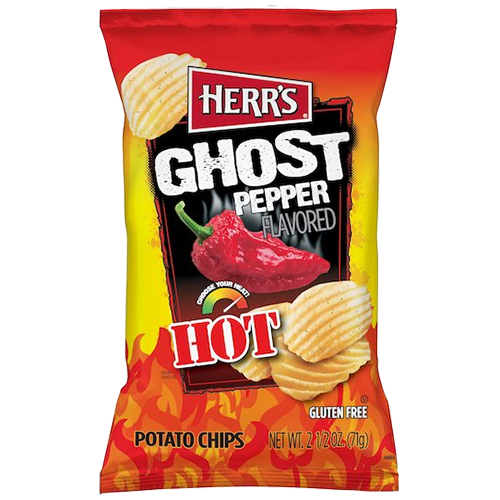
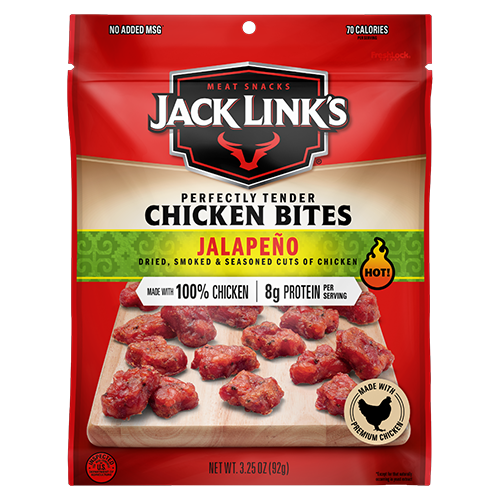
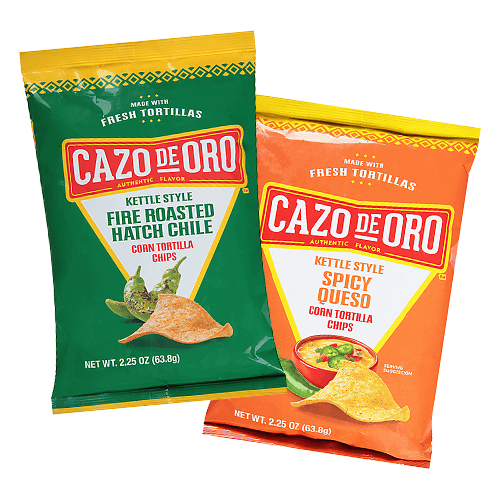
Cazo De Oro Tortilla Chips
Simply the most flavorful tortilla chips you’ll ever taste! Authentically made with freshly cooked tortillas to give a rich flavor …

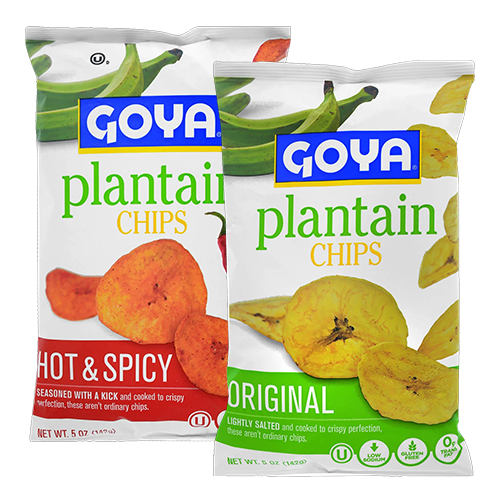
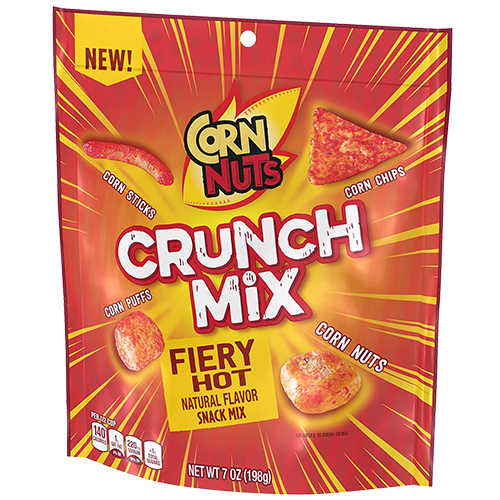
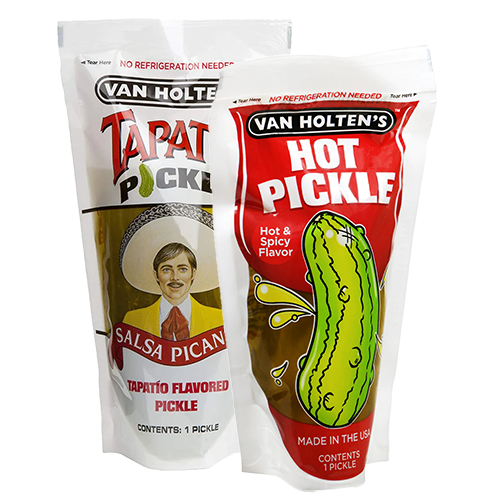
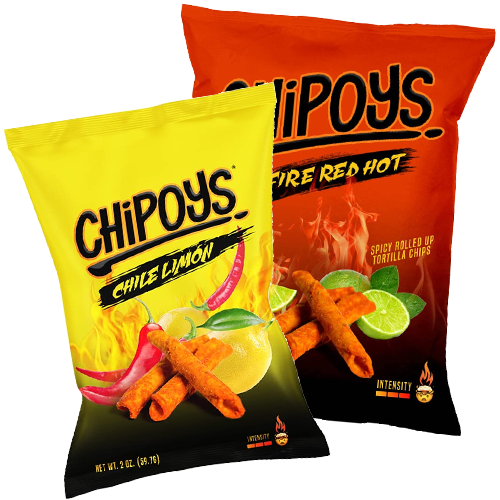
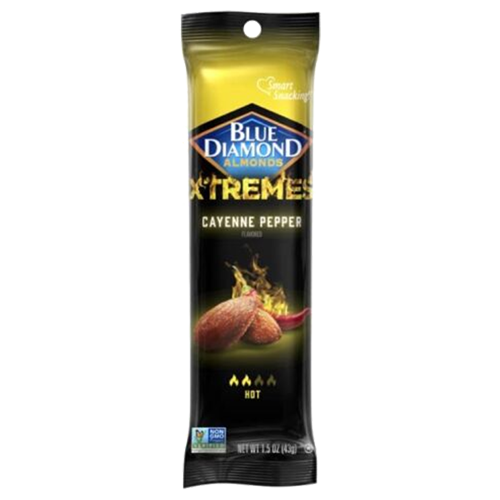
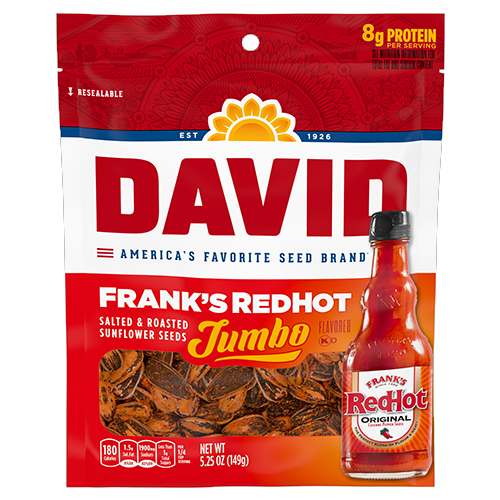
Nostalgic Eats
Every generation is susceptible to it. Just when you think you won’t be – boom – you’re that person, looking at the snack selection thinking, “What happened to all my favorites!?”
Bringing back classic favorites is a tried and true method for brands to boost sales among their more nostalgic customers, but in recent years we’ve seen a surge in all things retro – including food choices (10).
From the McRib, to Boo Berry and Frute Brute cereal – long-standing brands are reaching into their recipe archive to deliver fun, nostalgia, great taste… and revenue.
It will be interesting to see how this trend aligns with other emerging patterns – like a push for naturally-occurring sweeteners, and label-friendly ingredients. “Glass bottle” sodas featuring pure cane sugar already sell for a premium, and other products are looking to capture that allure. Consumers interested in these trends could find value in older recipes that pre-date the popularity of many of today’s more common, processed ingredients.
The Mighty Fried Chicken Sandwich
The “chicken sandwich wars” are real, and they’ve had a real impact on food service in c-stores. While traditional quick service restaurants battled it out with each other to create new, improved, craveable fried chicken sandwich varieties, the market grew to expect novel variations on this humble stalwart. C-stores have had to step up to fill those expectations (2). In another iteration of investment following demand, c-store brands have upped their game in the fried chicken department, offering novel spice and flavor options, premium toppings, and even new-and-improved buns (21). Fried chicken 3.0 is here to stay – and as a premium product, that’s a good thing!
– .
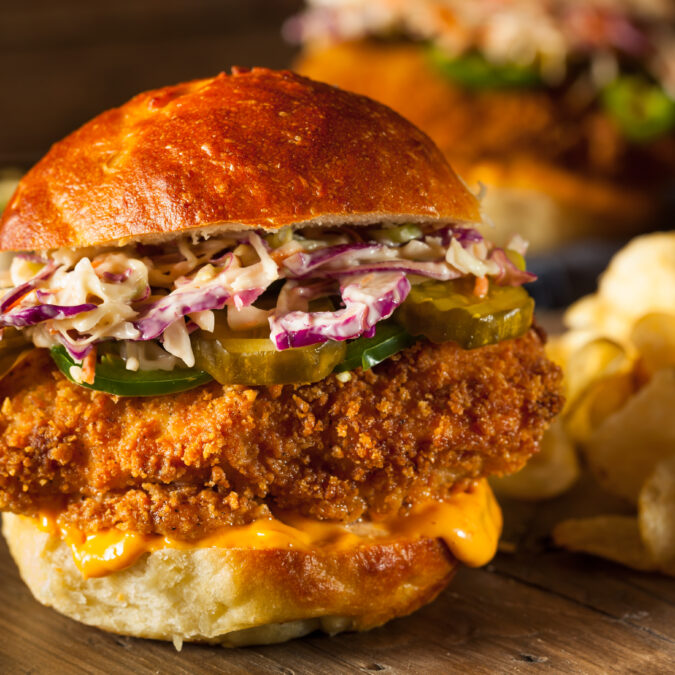
Fresh Beverage Options
Across the industry we are seeing a budding trend in the beverage segment – an affinity for fresh-brewed beverage options. C-stores are increasingly being seen as alternatives to traditional “coffee shops” and quick service cafe restaurants. Bean-to-cup coffee initiatives and fresh brewed iced tea are two trends we expect to continue.
New Horizons for “Enhanced” Food Products
Across much of the United States, CBD-enhanced food products have already made their mark, and peaked in sales. Products containing a variety of ingredients aimed at providing relaxation, stress relief, or sleep benefits are already selling well in a variety of formats – gummies, vaporizers, capsules, etc. Products like Delta8, Kratom, and CBD varietals have all been trending up. We expect to see an increase in functional food products that contain these and other enhancements. In many ways, these products have also paved the way for the next iteration of “enhanced” foods – THC-enhanced food products, and even foods featuring psilocybin, the active compound in hallucinogenic mushrooms.
While these substances are enjoying increasing popularity and decreased legal scrutiny, it will be important to track trends and regulations at the state level, so that c-stores can lead the charge into these novel product categories. These products have the potential to become the next major “adult” food segment (2).
Supporting Health and Wellness
Across industries, from food to beauty products, to vacation recreation and home construction, we are seeing more focus on promoting health, wellness, and longevity. While your local c-store consumers may not be looking to utilize a sauna or plunge pool at your store, their food choices are reflecting this increased attention on wellness.
Consumers are looking beyond the generic “healthier” options, to find foods that support their specific wellness goals. And they are expecting these choices to be available at affordable price points (12, 2, 8, 14).
Supporting Balanced Wellness
Foods intended to support balanced wellness (supporting weight loss, health, psychological well being and more) are becoming continually more popular. It isn’t enough for healthy food options to simply be “better for you” than their snack-food counterparts any longer. Consumers are seeking products that will support their bodies and minds for peak performance – this doesn’t always mean cutting calories or going for a “low-fat” version. Specific options to support immune function, digestive health, heart health, and mental well-being are at the top of consumer concerns (8).
More than ever before, consumers are relating their mental well-being with their food and beverage choices. 48% of consumers plan to address their mental health in 2023 – with nutrition and supplements being part of that plan (8). Stocking a wide variety of wellness focused food products will help c-stores rise to consumer expectations.
Proactive Nutritional Personalization
A one-size-fits-all approach to healthy foods has fallen to the wayside in recent years, in favor of a tailored approach, aimed at supporting individuals’ unique bodies and health goals. 63% of consumers surveyed worldwide report that they are interested in food and drink products that are customized to their specific nutritional needs. Moreover, 55% of consumers also reported that they would be willing to pay a premium for functional foods that support their wellness goals (12).
Expect a continued increase in products that aim to fill a certain role, achieve a certain goal, or cater to a specific stage of life. We’re already seeing foods formulated to help muscle growth, aid in weight loss, provide energy and mental clarity, or specifically to support people who are elderly, pregnant, etc. We expect further segmentation and contextualization for different demographics and needs.
Watch for this trend to dovetail with others in this report – especially with regard to emerging flavors, label-friendly ingredients, naturally occurring sweeteners, and alternative protein sources (2, 12).
Gender- and Age-Group Targeted Nutrition
As part of the push towards proactive personalization in the nutrition sector, brands are marketing products that promote health at different life stages and for different gender needs. Dietary supplements have long been formulated and marketed for specific age groups and genders – but we’re beginning to see this pour over into grocery and commissary type products as well (2, 13). Gender and age-groups seem to be the first demographics being heavily explored, but we expect this to expand.
Dietary Supplements
The dietary supplement market continues to grow at a nearly 9% CAGR, with the vast majority of those sales coming from brick and mortar retailers (24). Grocery and convenience store chains continue to see dietary supplements growing as a revenue source.
As the baby boomer population continues to age, we expect to see continued growth in the supplement market, especially in the subcategories of bone/joint health, eye/vision health, and hydration products (13). Supplements aimed at staying mentally sharp are on the rise among the younger cohorts (27).
Affordable Nutrition
One theme impacting the nutritional foods segment is the push for more affordable options. C-stores became an even greater staple for consumers during the pandemic, as an option for groceries, household items, and more when other stores were shuttered.
Meanwhile, consumers are continuing to become more educated about nutritional foods, and are looking both for cheaper, simpler, whole food options (fruits, salads, nuts, etc.), as well as lower priced health food products (8, 14). Increasing the availability of these options allows consumers to complete their shopping without traveling to a second store, and increases basket values for c-stores (8).

Packaging and Production Trends
It’s not just the products themselves that today’s consumers are scrutinizing. From sourcing and supply chains, to labor and production standards, to the very packaging of the product – American consumers are holding the brands they patronize to their same high, value-driven standards.
MR Williams has partnered with Date Code Genie to bring smart labels to c-stores
Read MoreEnvironmentally Friendly Production
As consumers become more aware of and educated about global food production practices, they are also becoming more selective about the products they choose for themselves and their families (1). Nearly half of all consumers, 49% of those surveyed, report having adjusted their food consumption over the past 2 years, specifically to be more environmentally friendly (12).
Consumers have also been focusing on reducing their own food waste in recent years, and are seeking out brands who match these values (with their production and packaging practices).
Social Responsibility
Consumers are continuing to show concern over the social and ethical impacts of their purchases, leaning on brands to treat employees, livestock, and natural resources humanely and responsibly. Reactions to perceived infractions on these values can be harsh – 30% of consumers worldwide report having boycotted a product or brand completely due to ethical concerns (12). That’s a significant portion of consumers who are willing to vote with their wallets.
Concerns around the ethics and social impacts of purchasing decisions don’t seem to be going anywhere, either. Recent reports show that 40% of consumers actively seek out brands that strive to treat farmers and laborers in their supply chain fairly (12). This trend also crosses paths with the growing “localvore” trend; consumers tend to assume that products created locally are more environmentally and socially friendly, as well (25).
Trust and Traceability
In line with the other packaging and production trends mentioned, consumers are demanding to see exactly where their food comes from, and what is involved in the process of bringing it to market. Brands that lean into transparency and traceability can build trust with consumers – which leads to long term sales (2).
Consumers are looking to support brands that they consider to be authentic and honest. Tracing and documenting the ingredients and processes that go into creating a food product, and making that information available to the public, are concrete steps towards building that trust. Brands are beginning to utilize digital technologies to allow individual products to be traced back to their origin, taking this idea one step further. Consumers will begin to expect this level of specificity on a regular basis (12).
Label-Friendly Ingredients
In alignment with some of the food option trends in this report, a push is being made for food products to include more “label-friendly” ingredients – ingredients that are more easily-recognizable to the average consumer.
Certain plant-based food products and naturally occurring ingredients lend themselves well to this trend. Brands are moving toward more plant-based or naturally-occurring sweeteners, stabilizers, colors, flavors, and textural components, in an effort to move away from overly “chemical-sounding” ingredients (28). Providing options that eschew heavily-refined sugars, modified starches, and refined fats is a good place to start, as these are often perceived to be “unnatural” and less appealing to consumers (31).
Minimalist Packaging
Simple, straightforward, and minimalist messaging is resonating with today’s consumers. The modern shopper is overloaded with information and stimuli. Connecting with fatigued customers requires transparency, honesty, and simplicity. Consumers are drawn toward packaging that clearly highlights the health benefits and natural ingredients of a product.
Speaking of transparency – consumers tend to favor packaging that is at least partially transparent physically, (2, 27) as well.

National Trends Summary
As c-stores continue to expand their footprint and their role in the life of the average consumer, the industry continues to invest to meet current trends and needs. Educated consumers are demanding a wider variety of products, with more transparency around supply chains and production practices – and brands are rising to the challenge.
Leaning into label-friendly ingredients, alternative and plant-based protein products, and naturally-occurring sweeteners are just a few of the ways c-stores are delivering for their customers. Keeping consumers connected with the emerging spice flavors they crave, and bringing to market personalized, health-focused food products at affordable price points will keep c-stores at the top of mind for the modern customer, as well.
Regional C-Store Food Trends
C-store food service is on the rise across the United States, with certain trends driving revenue growth in specific parts of the nation. While data on regional trends is much more sparse compared to national, and even global trends, regional differences account for much of the variety among the products featured at US stores.
Regional trends can also be difficult to pin down because some span large swaths of the nation, and others are hyper-localized. For example, MR Williams is headquartered in North Carolina – even in our mid-sized state, two distinct regional barbeque styles are represented in c-stores. In Eastern North Carolina, whole-hog BBQ, mopped with a spicy vinegar-and-red-pepper based sauce is on the menu. For Western North Carolina, you’ll find “Lexington Style” BBQ – smoked pork shoulder, with a vinegar-and-tomato based sauce, with a bit of brown sugar for a whole different dimension (33). And folks are particular about their “local” foods!
When it comes to the consumer, 96% agree that in order for a food product to be considered local, it must be sourced and produced no more than 100 miles from where it is sold (26). This is a good benchmark, as there is no formal definition or regulation for what can be marketed as local! (32)
One of the biggest takeaways when it comes to regional food trends: people want to feel a connection to the foods they eat. The localvore movement is alive and well, and impacting c-store sales more than ever before. Locally sourced products, with information on product origin, and locally-inspired flavor profiles are poised to rule the day.
Frog legs, pig feet, and more: Localization of menu items at retail locations MR Williams serves.
- Carolinas
- Virginia
- Southern Maryland and Delaware
Carolinas
Eastern North Carolina
• Vinegar-based pulled or chopped BBQ
• Chopped vinegar-based coleslaw
• Cheddar Bomb Biscuits (cheddar cubes baked inside a homemade biscuit)
• “Red” hot dogs
Western North Carolina
• Liver mush
• Tomato-based pulled or chopped BBQ
• Smoked sausage dog link
• Sausage & gravy biscuits
South Carolina
• Frog legs
Local Products and Flavor Profiles
While it’s true that the localvore movement is represented nationwide, with 75% of Americans actively trying to incorporate more local foods into their diets, this looks different from region to region. Some products with known regional variations, like pizza, are enjoying an explosion in popularity, with c-stores striving to deliver authentic, local options from one market to the next.
With examples like pizza, not only are there different toppings to offer – there are countless styles that differ in taste, preparation, ingredients, and experience – from Chicago deep dish, to classic New York style, to Detroit square pizza, Rhode Island bar style pizza, and more. These hyper-localized varieties are proving to be a revenue generator for c-stores! With 67% of consumers reporting that they are willing to pay a premium for local food products (up to a 20% increase), this is a trend that presents a tremendous opportunity (34).
What regional trends are impacting our territories?
Southeast
The southeast region is seeing two trends simultaneously – an increase in traditional southern style comfort foods is prevalent, but the ethnic food segment is currently the fastest growing of all. Mexican, South American, and Asian flavors are currently trending up in the southeast, alongside new variations on old favorites like chicken and biscuits.
Northeast
The northeast region is a hotbed for locally sourced foods. Demand for local, fresh produce, meat, and dairy products is particularly high in this region. Fresh foods, salads, and ready-to-eat meals are all trending up in this region. Fresh-brewed bean-to-cup coffee is rolling out across stores in the Northeast, for the beverage sector. Like elsewhere in the country, emerging flavor profiles from around the world are also being highlighted alongside these local options.
Mid-Atlantic
The mid-Atlantic region is seeing more of an influx in local snack foods, jerkies, and some comfort food staples traditionally associated with more southern regions. The spicy food trend growing across the nation can also be seen prominently in the mid-Atlantic.
Brewed teas, bean-to-cup coffees, and fresh sparkling water options are slaking thirst more and more in this region, as well. Finally, the Mid-Atlantic region is also seeing an above-average increase in drive-throughs at c-stores, which is impacting the amounts and types of food products being sold.
Regional Trends Summary
In summary, people like to feel a connection with the foods they eat and the products they purchase. One of the most direct ways to form that connection is by buying locally grown or produced foods. Leaning into traditional local foods and flavor profiles is another way. Some staple food products have variations in nearly every major market, while other food products are hyper-local entirely. These trends present a great opportunity for c-stores, as the majority of consumers report being willing to spend more for foods that are “local” – which consumers generally think of as being produced less than 100 miles away.
Wrapping Up
It’s clear that the c-store industry is experiencing positive growth and significant change. Much of that growth stems from the willingness of c-store owners and operators to invest, innovate, and adapt to customer needs. C-stores are an increasingly popular alternative to traditional fast food restaurants, while also experiencing a surge in demand for healthy, sustainable, label-friendly packaged foods. It’s no wonder that the food service segment is the fastest growing in the industry.
C-stores are continuing to rise to the challenge, but those that are ready and willing to provide diverse and affordable options, both local and internationally-inspired, are poised to benefit the most. Consumers are increasingly interested in emerging flavor profiles from around the world, as well as locally-produced food products. In addition, health and wellness is on the mind more than ever before. Label-friendly ingredients, plant-based alternatives, naturally-occurring sweeteners, supplements – the consumer is more educated about their own health, and more proactive about their wellness choices. Offering a wide range of affordable products that allow customers to choose what is best for their individual goals will become more common and expected.
Expect to see more detailed food trend studies in the future, as the technology needed to track products from production to consumption become more widely adopted. The brands who are able to leverage this information to best serve their customers will reap the benefits.
Resources
1. The Future of Shopping: Uncovering Consumer Trends for 2023 – Teamwork Commerce
2. 2023 Top Food Trends – Global Food Forums
3. The 2023 Food Trends You’re About to See Everywhere (bhg.com)
4. 2023 Grocery Store Trends You’ll See Everywhere (eatthis.com)
5. Bluedot Releases Key Themes Set to Reshape C-Stores in 2023 (prnewswire.com)
6. C-Store Trends Through 2025 (emerson.com)
7. Technology Trends to Watch in 2023 | Convenience Store News (csnews.com)
8. https://www.cityfm.us/blog/4-convenience-store-trends/
9. 5 trends transforming convenience stores and gas stations – Aevi
10. New Year, New Food: 5 Dining Trends For 2023 – Placer.ai
11. https://www.partstown.com/about-us/fast-food-trends
12. ADM Announces Global Trends Set to Drive Nutrition Innovation for 2023 | Business Wire
13. Dietary Supplement Categories Trending in 2023 – WholeFoods Magazine
14. Redefining Value crowns Innova Market Insights’ Top Ten Trends 2023 as global cost-of-living crisis bites (foodingredientsfirst.com)
15. Convenience Stores Market Size & Analysis Report, 2028 (grandviewresearch.com)
16. 22NACS_ResearchTech_IQnews_Q2_V07_WEB (convenience.org)
17. Bluedot Convenience Experience Report – FINAL 6.27.22.pdf – Google Drive
18. Convenience stores get customers’ attention when it comes to food (supermarketnews.com)
19. Convenience Stores Boost Prepared Food | PYMNTS.com
20. Specialty Food Association forecasts 2023 top food trends | Supermarket News
21. Resource Library | National Restaurant Association
22. Timeline: The Rapid Evolution of Plant-Based Alternatives (visualcapitalist.com)
23. 9 Key Food and Beverage Industry Trends (2023-2026) (explodingtopics.com)
24. Dietary Supplements Market Size Report, 2022-2030 (grandviewresearch.com)
25. Why eating local isn’t always best for the environment – Scienceline
26. Local foods in the U.S. – statistics & facts | Statista
27. Mintel announces Global Food and Drink Trends for 2023
28. Food Brain Predicts… Trends 2023 & Beyond – Report (spoonshot.com)
29. Beet Sugar Market Research Report 2023-2028 with Top Countries Data – MarketWatch
30. https://www.eatingwell.com/article/290373/a-buyers-guide-to-sugar-substitutes
31. How is the clean label trend evolving? Mintel (foodnavigator.com)
32. Defining Local Food: An Analysis of State Approaches and Challenges | Vermont Law and Graduate School
33. Different Regional Barbecue Styles & Flavors | BBQ Champs Academy
34. Consumers Increasingly Value Local Food – CStore Decisions
